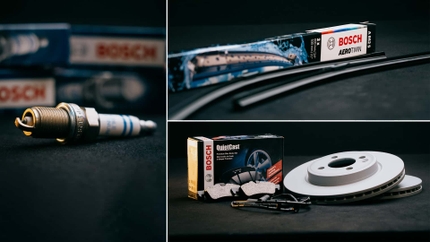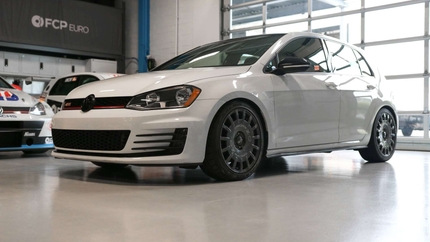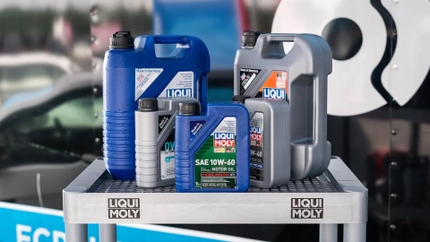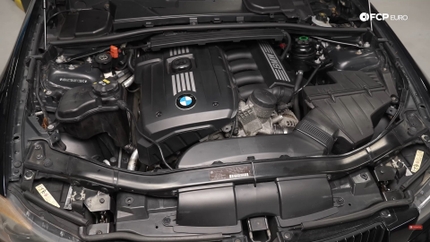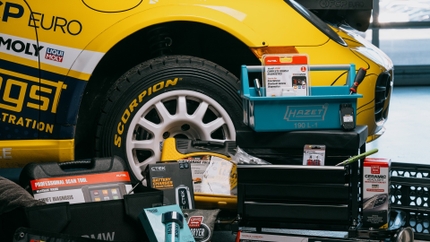- 11/26/2019
- 7 Min Read
- By: Antonio Alvendia
Volkswagen And The Petersen Automotive Museum Build An Electric Future
As Volkswagen celebrates 50 years in the United States, its future is looking shockingly electric with the introduction of the ID. Space Vizzion concept. With current governments demanding more electric fleets and public opinion swaying heavily towards an EV future, brands like Volkswagen have been forced to offer something not powered by gasoline or diesel.
VW went even further by declaring that from here on out, their motorsports programs would only be devoted to racing electric vehicles.
They also expanded upon their ID. line with the debut of a brand new ID. Space Vizzion, with a special debut at the Petersen Automotive Museum. We also looked at some of the displays of the "Building an Electric Future" exhibit, which was a collaboration between Volkswagen and the Petersen Automotive Museum.
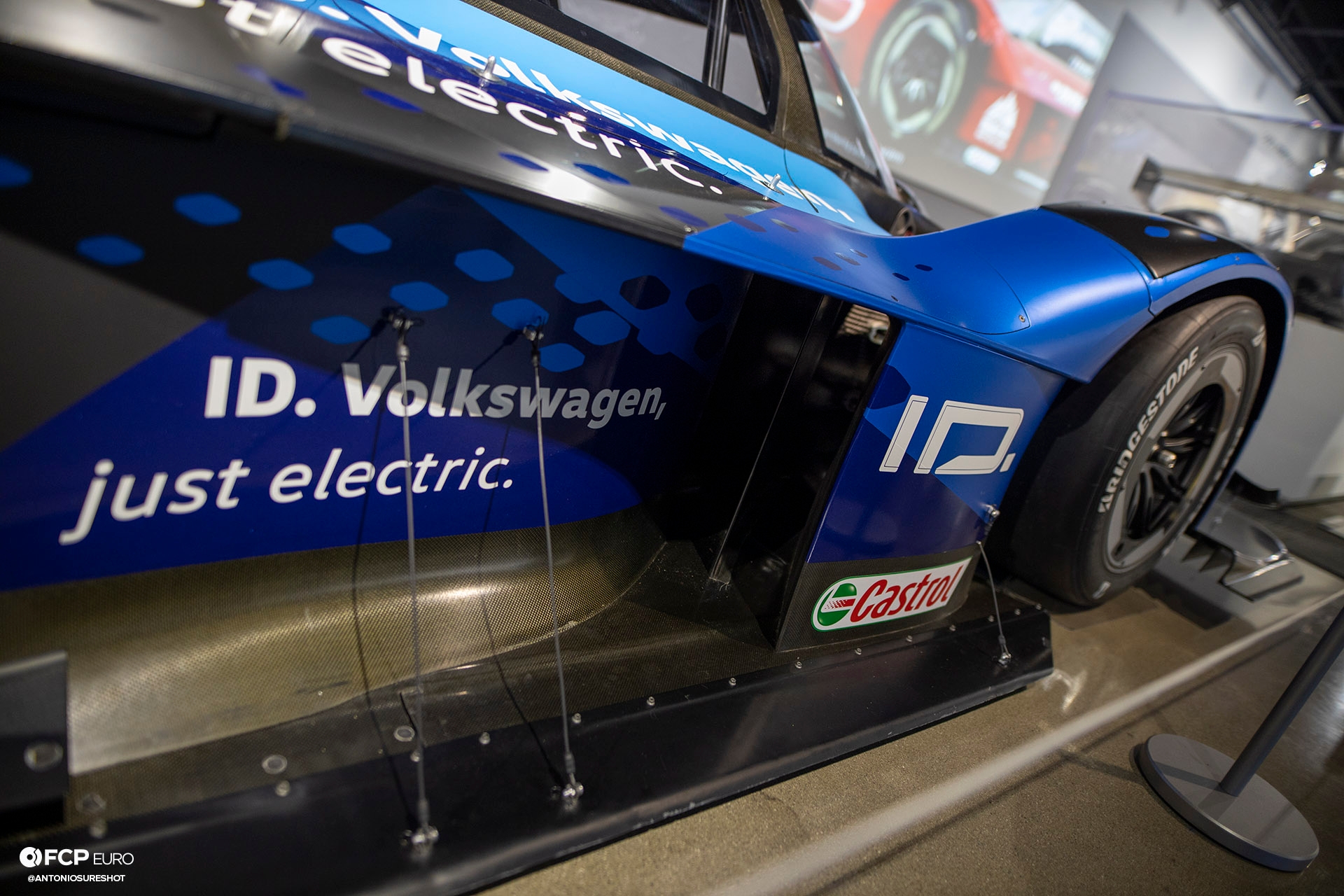
Going EV in motorsports wasn’t a hard decision for Volkswagen. They have already proven that their ID.R race car is more than fast enough. It’s taken records at the Pikes Peak Hill Climb, the Goodwood Festival of Speed Hill Climb, Tianmen Mountain Road, and set a new record for EVs at the Nurburgring.
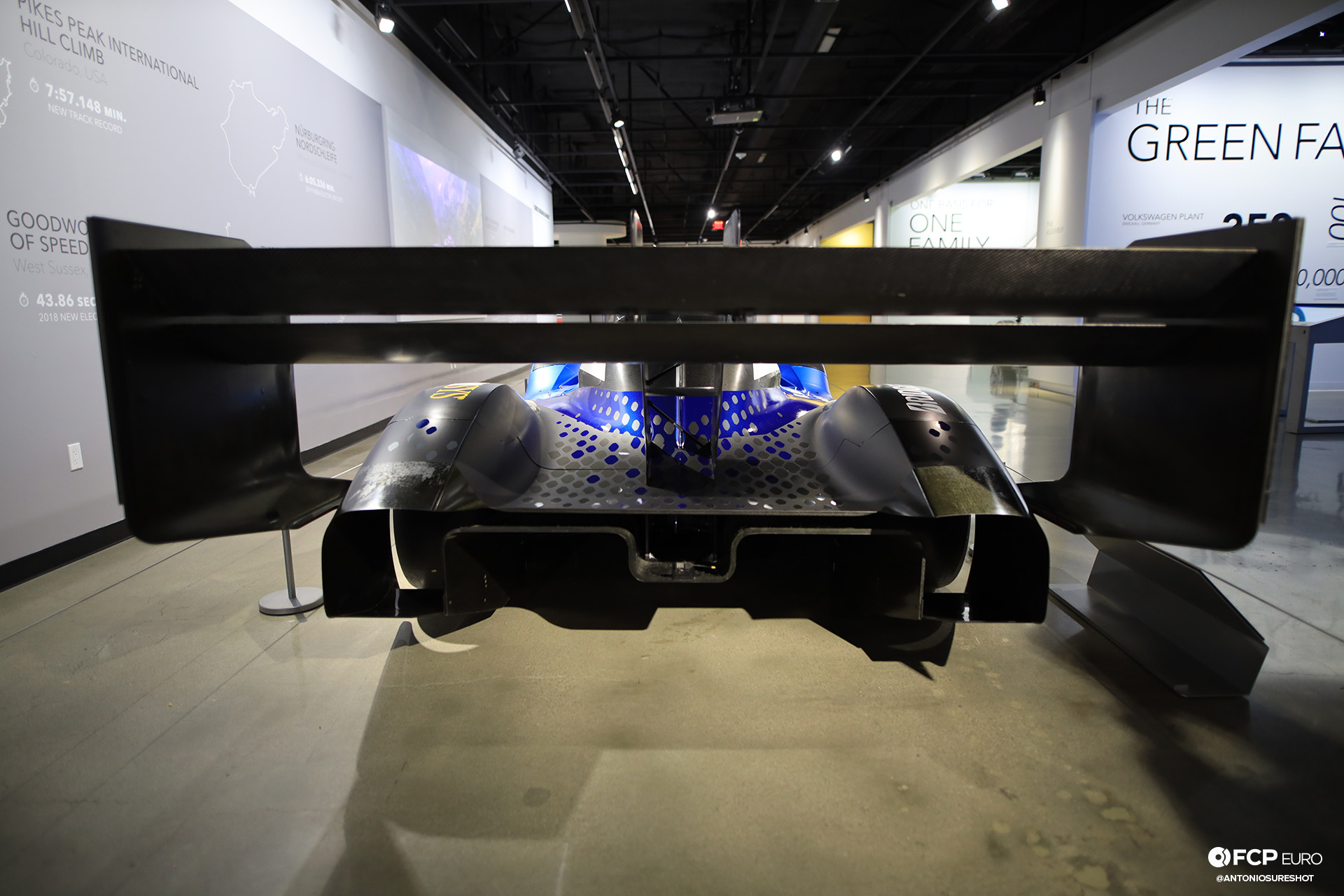
Much of its early success comes from the brilliant engineering done by Volkswagen’s motorsports team. A good portion of that was aerodynamic design helped by Porsche’s 919 effort but it has gone its own way since then.
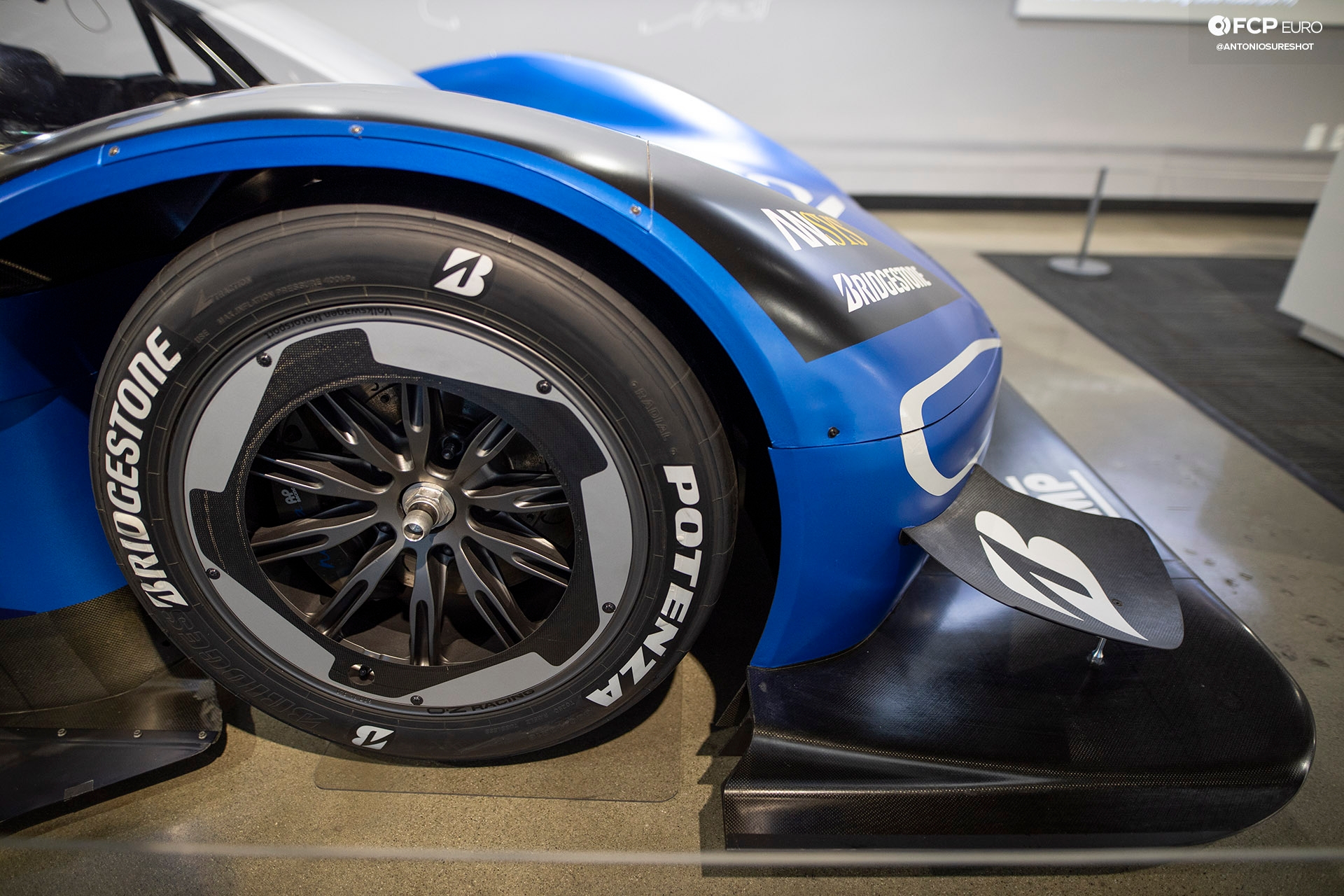
From its original, high-downforce producing bodywork, the ID.R evolved into a sleeker vehicle. Most of the records it chased after Pikes Peak weren’t hampered by a lack of air as it climbed up a mountain. The thin, high-altitude air required larger wings to scoop out massive amounts of it. The atmosphere thins to as little as 60-percent of what you find at sea level when you summit Pikes Peak. It now has a design made for cutting through the air with just enough aero trickery to keep it on the ground during high-speed runs.
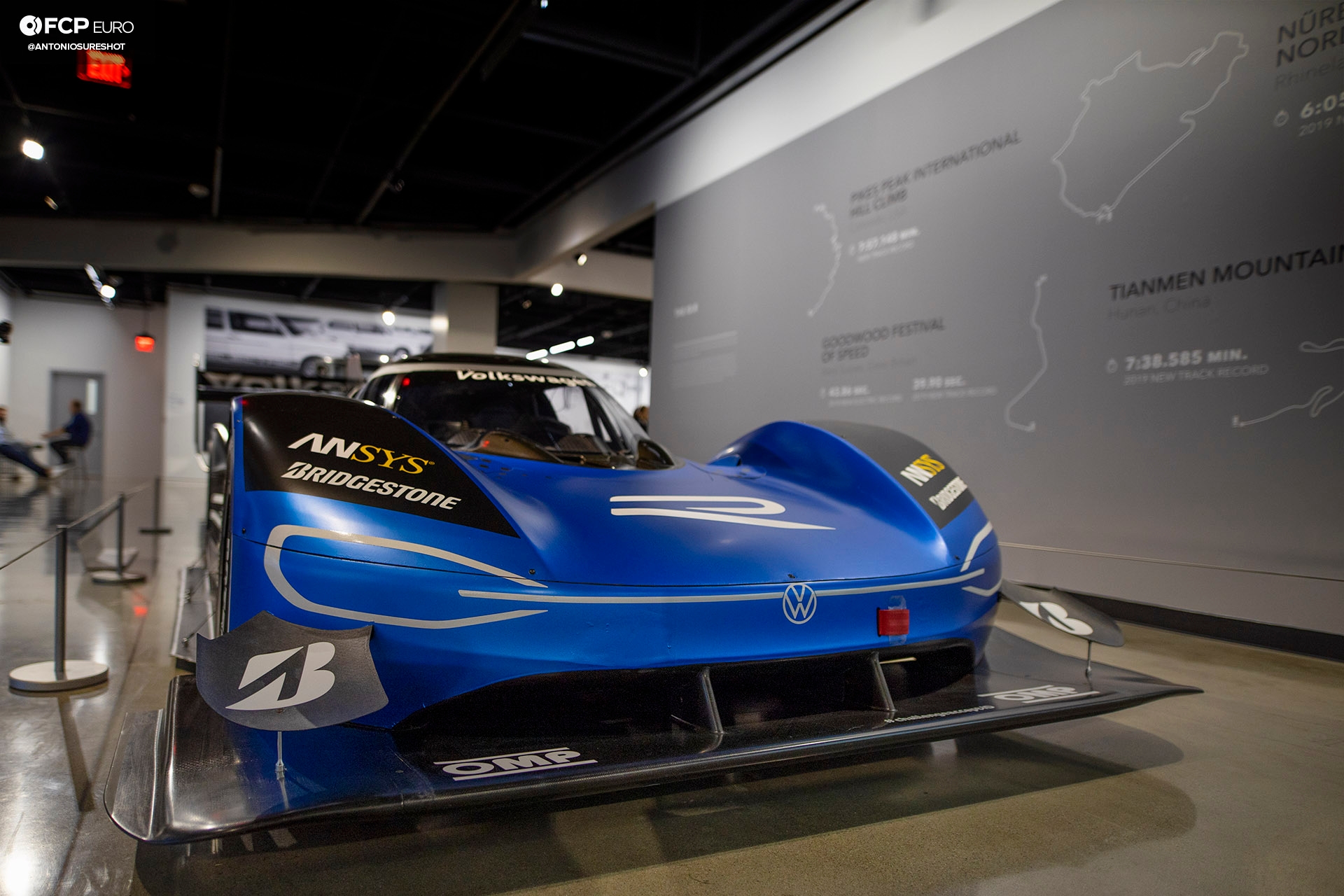
We’d also be remiss to not count the effort and skill of the ID.R’s driver, Romain Dumas. He has been the only pilot behind the wheel during each record. The Frenchman has a long history driving with Porsche and Audi efforts at Le Mans, Daytona, and he even has some Dakar experience. Now he is helping Volkswagen prove that an electric future isn’t something to fear. If anything, it shows that there is an exciting opportunity in motorsports with EVs involved.
How about the rest of us? For those who don’t realistically aspire to set records at tracks and just want something of a hauler for the family, something like a sport utility vehicle or a station wagon might be the ticket. That’s where VW’s ID. Space Vizzion comes in.
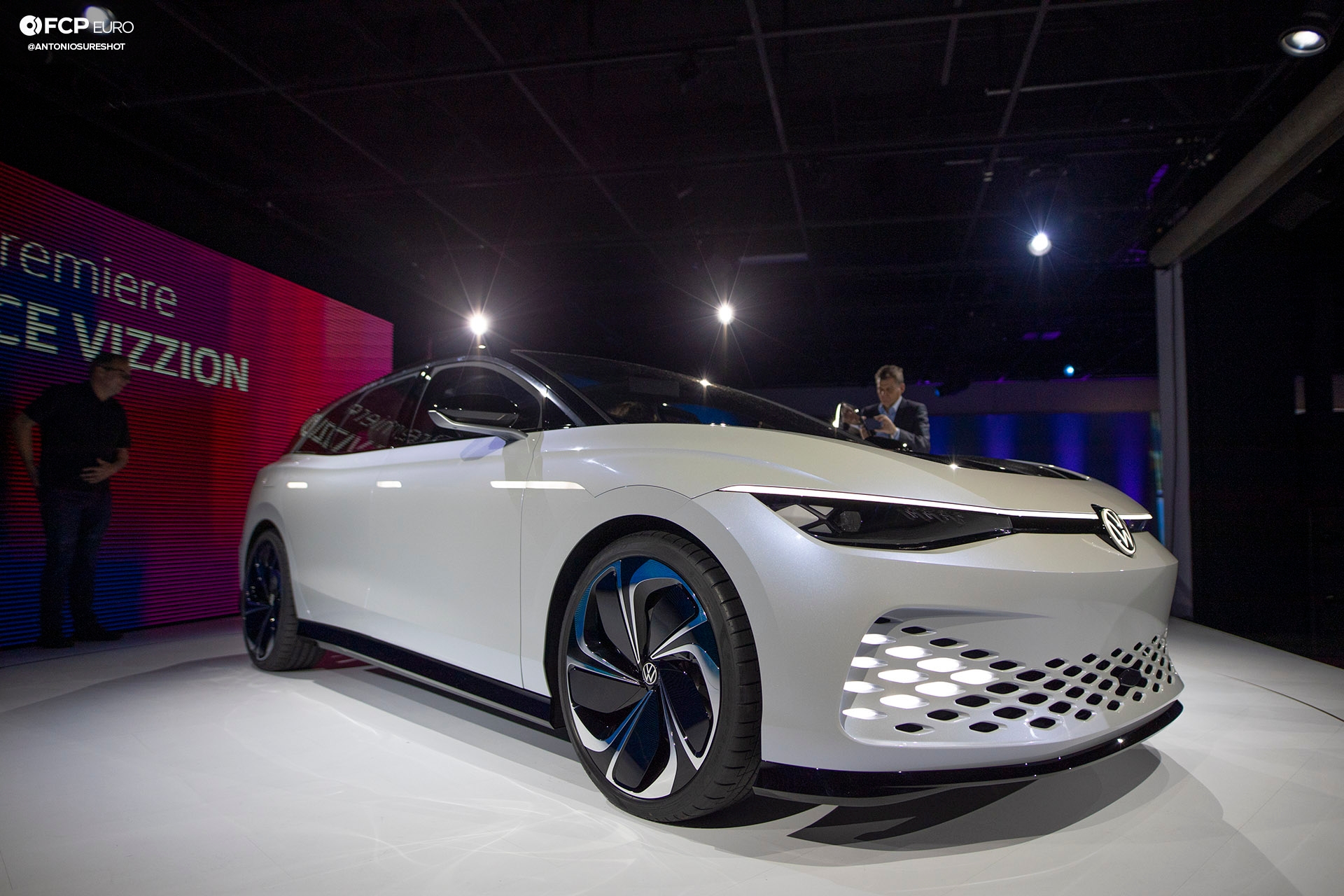
It shows us that not all electrified utility vehicles need to resemble ugly looking triangles. While it doesn’t have the high-ride of a traditional SUV, they did liken the concept to one with the room it affords thanks to using a flat floor. “If you look at ID. Space Vizzion,” Scott Keogh, president and CEO of Volkswagen Group of America, told us, “you have to look at utilizing interior capacity. This is a great way of getting that room with the aerodynamics for maximum range.”
“The bigger picture is the ID. family,” Klaus Bischoff, Executive Director of Volkswagen Design, also explained to us, “our aim is to create outstanding and unique product designs.” Mr. Keogh added, “As we move towards electrification, we’re going to see the definition of boxy SUVs change.”
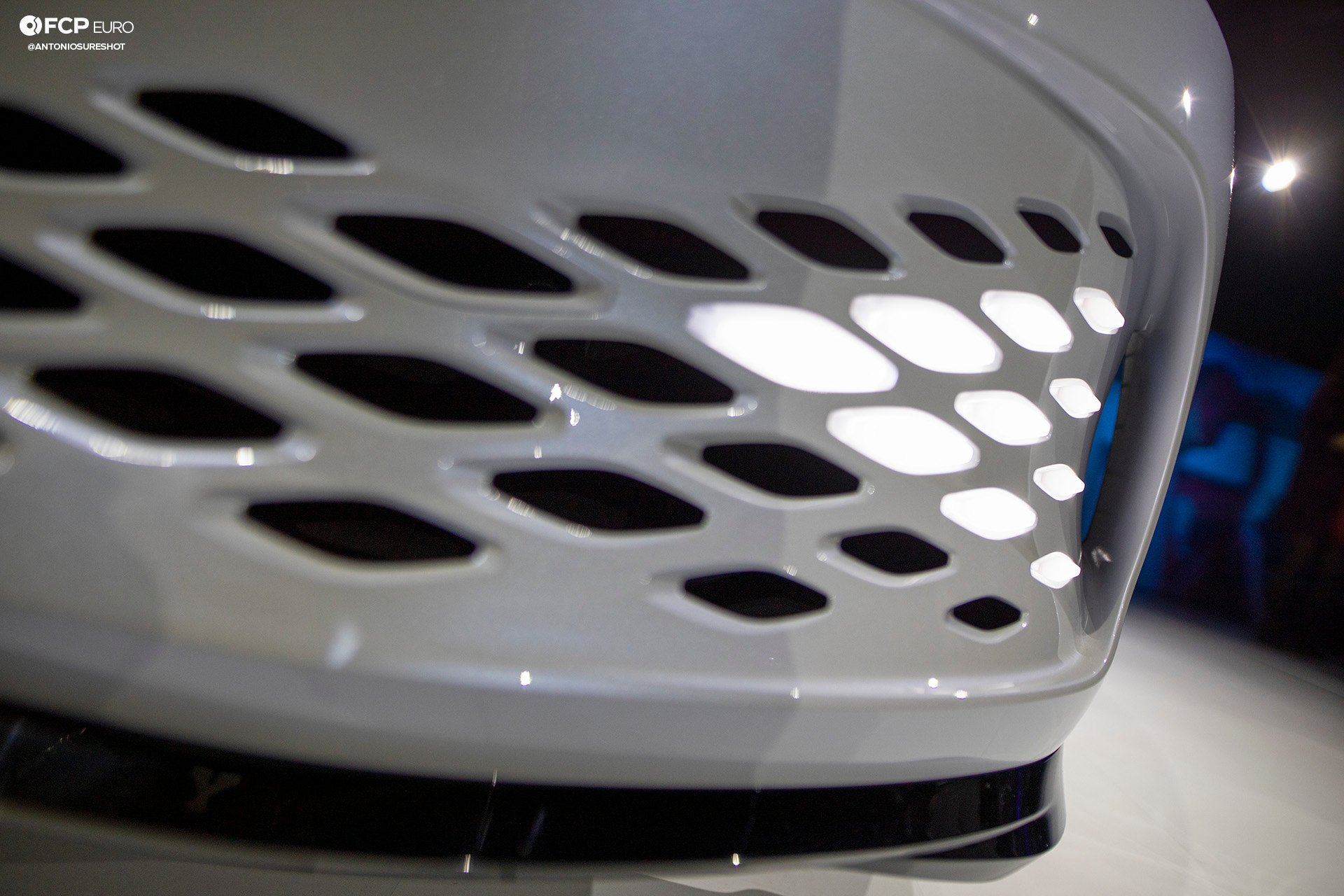
“Here you have a super-functional product,” Mr. Bischoff continued, “that’s super-sleek with very nice proportions.” Some of the interesting design ideas made into the car make it very smooth, aerodynamic, and rakish but not drastically removed from what you’d expect from a car. For example, the bumper features a cut out that directs air around the front tires.
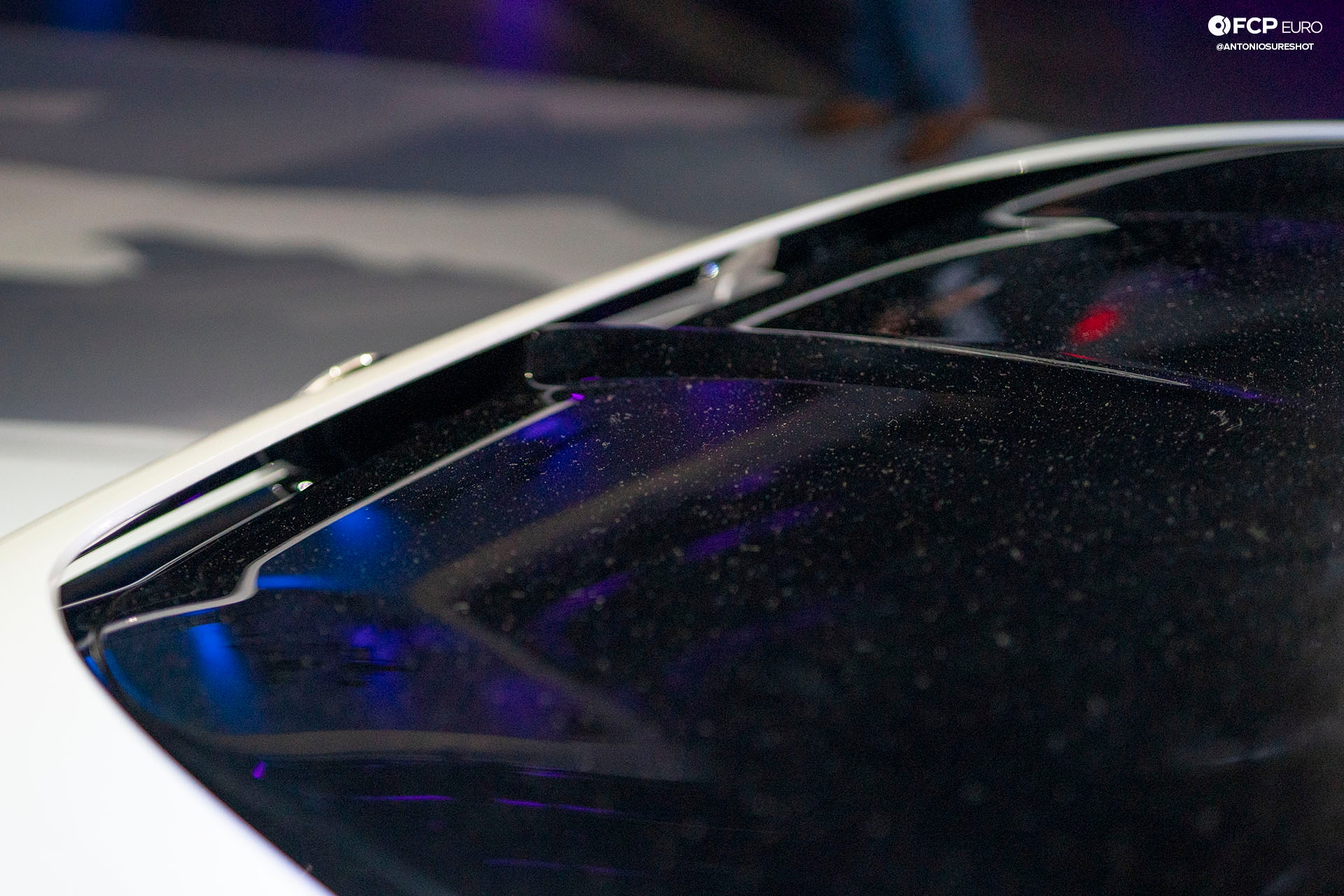
The hood and front bumper are designed to direct the air pushing against the front end and have it flow over the roof more efficiently when combined with its rear spoiler. So, unlike the idea of pulling hot air out of the engine bay – as you would a water-cooled, front-engine race car – this “hood vent” only serves to drive air from the nose of the ID. Space Vizzion, to over its roof.
“There are a lot of details, a lot of features that we aim to bring into production,” Mr. Bischoff said. “I think the core DNA of what we’re trying to do will stay,” Mr. Keogh added, “For Volkswagen, we love the ID. Space Vizzion. We also love the fact of how stylish the car remains even when there are two to three variations of it. We’re still deciding which one will come to the US in 2022.”
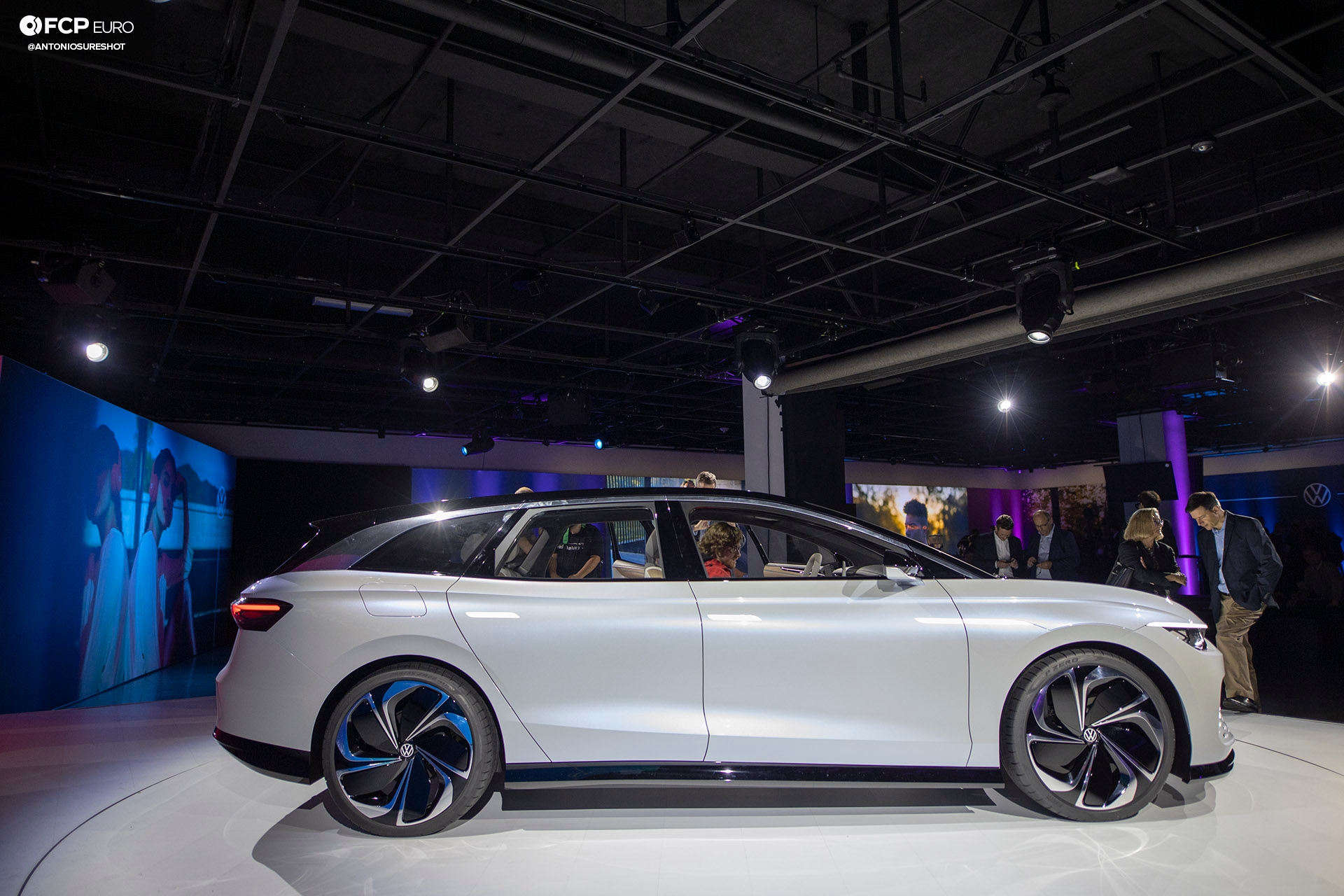
Aerodynamic efficiency isn’t the only design goal of the ID. Space Vizzion’s body. As Mr. Bischoff stated, “Electric cars are very silent and the noise emissions are something that you need to balance.”
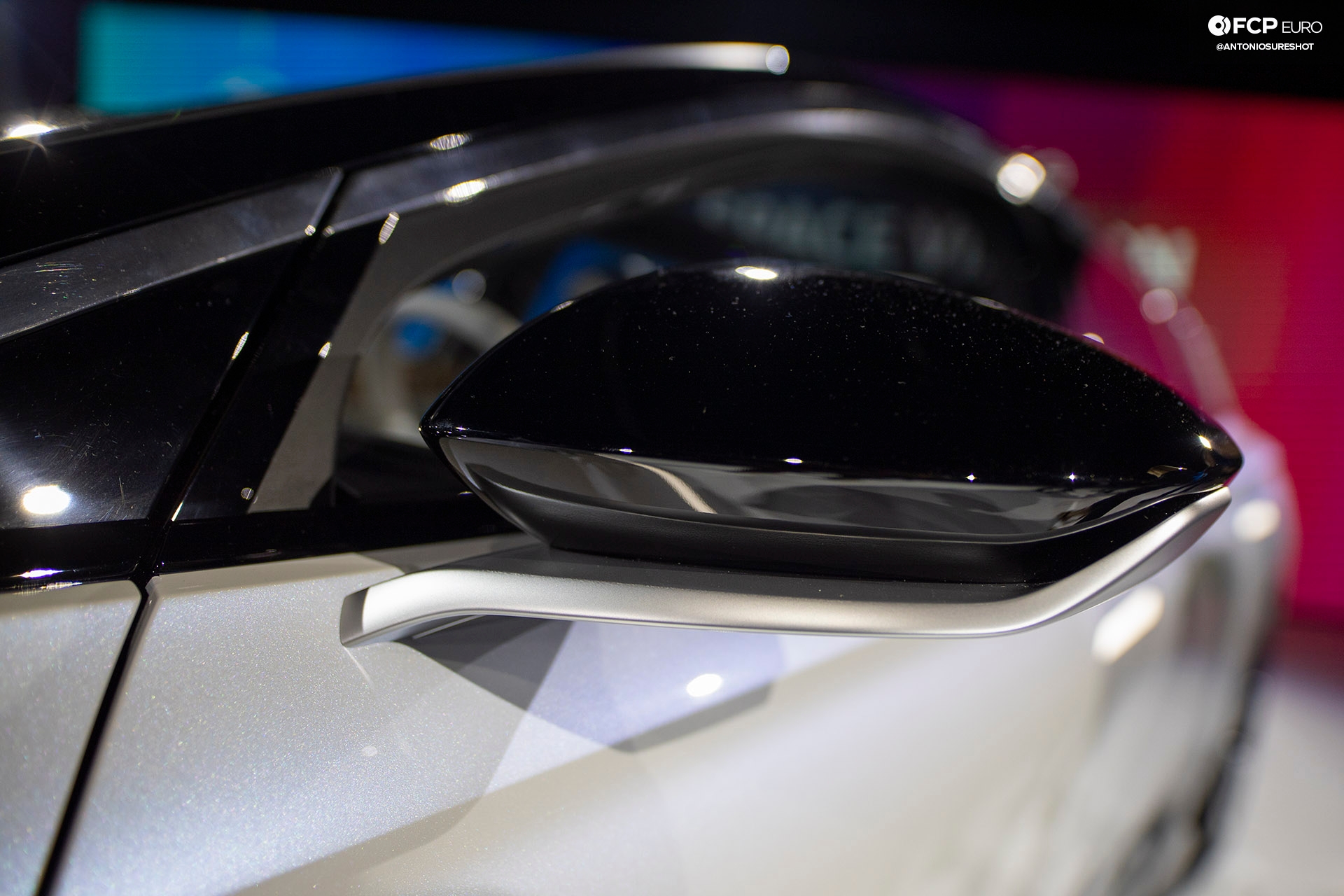
“It must make some noise to warn pedestrians but also not create too much wind noise while driving faster,” Mr. Bischoff explained, “You need to take special care of the aeroacoustics in a product like an EV car.”

“ID. Space has a super-functional interior that’s very spacious and unique,” Mr. Bischoff said as we moved around to the inside of the Space. It has many elements that are becoming normal for all cars, let alone EVs. The large, iPad-like center screen that controls the radio and HVAC replaces head units we’re used to seeing just five years ago. The dash does recall some old school elements like wrapping around the interior. It starts at one rear door and ends at the other.
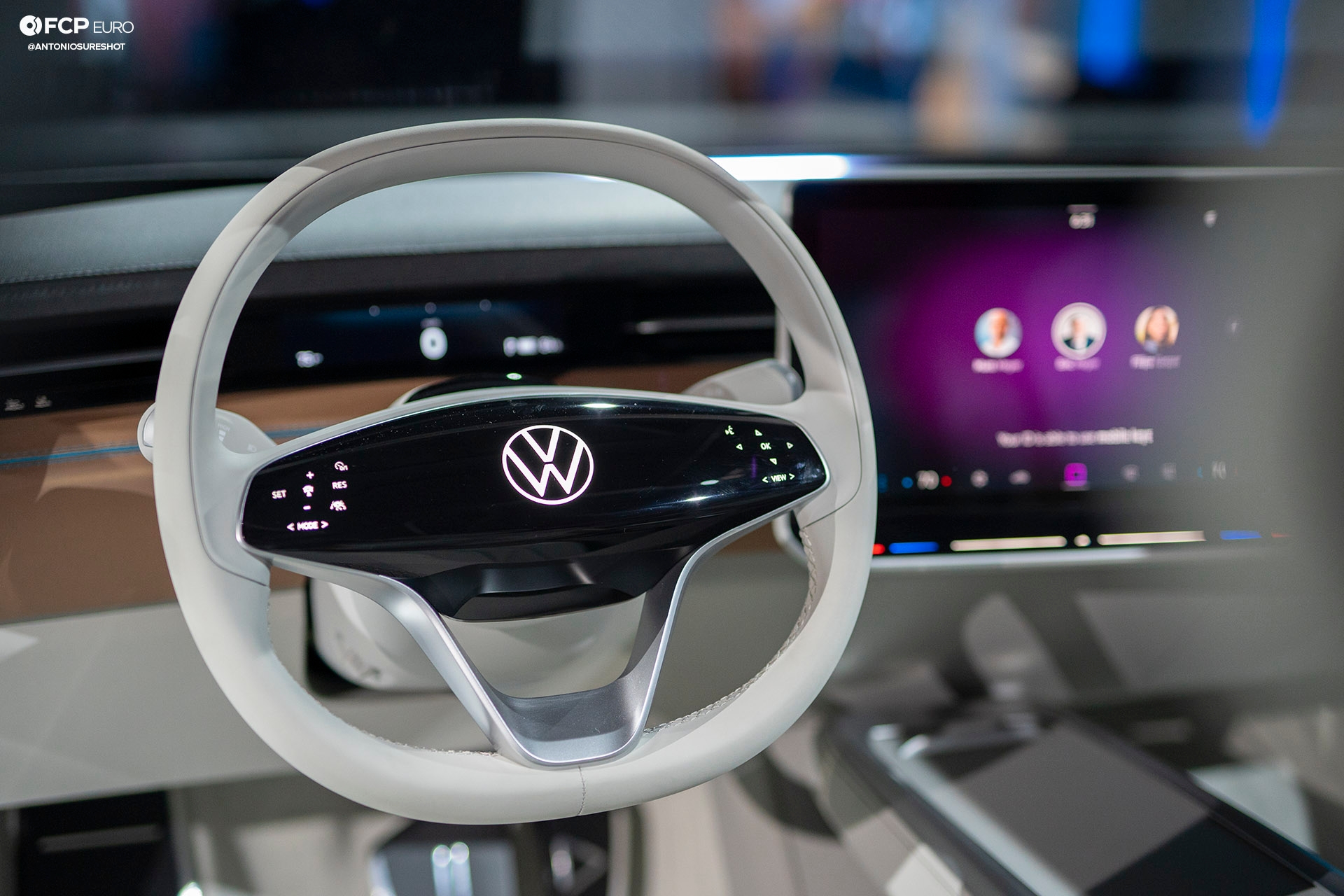
We don’t foresee this entire steering wheel making it to production, but this will most likely reflect the future. The capacitive touch panels close to your thumbs will probably remain as we continue down the path of removing physical controls. The right-hand stalk is how the ID. Space Vizzion shifts from “park” to reverse and drive. This also means that, if brought to production, the wiper controls will be on the left-hand side stalk.
Just above the steering wheel is a small display that shows the driver their speed and battery charge level. However, that’s all that is shown on the dash. All of the information a driver needs to see will instead be on an augmented reality (AR) heads-up display. Pictures for navigation, speed indication, and more are projected in a large, easy to see format in front of the driver.
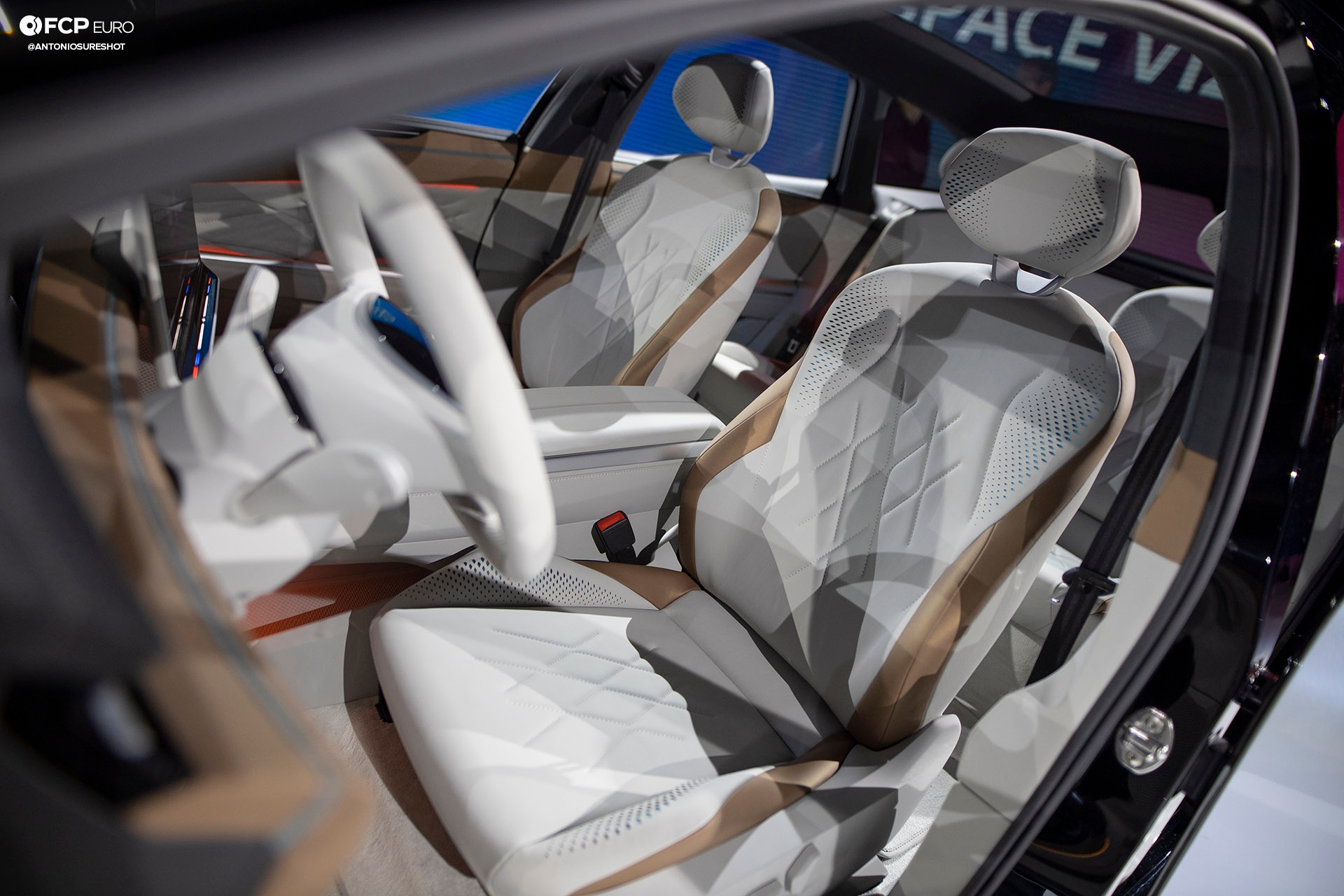
What you’ll also notice is a lack of leather and chrome in the ID. Space Vizzion. There are chrome-like elements, but these are not done by traditional chroming—a harsh, environmentally unfriendly process that uses etching chemicals as well as copper and nickel plating. Instead, it's all painted on the metal with a “chrome-look” paint.
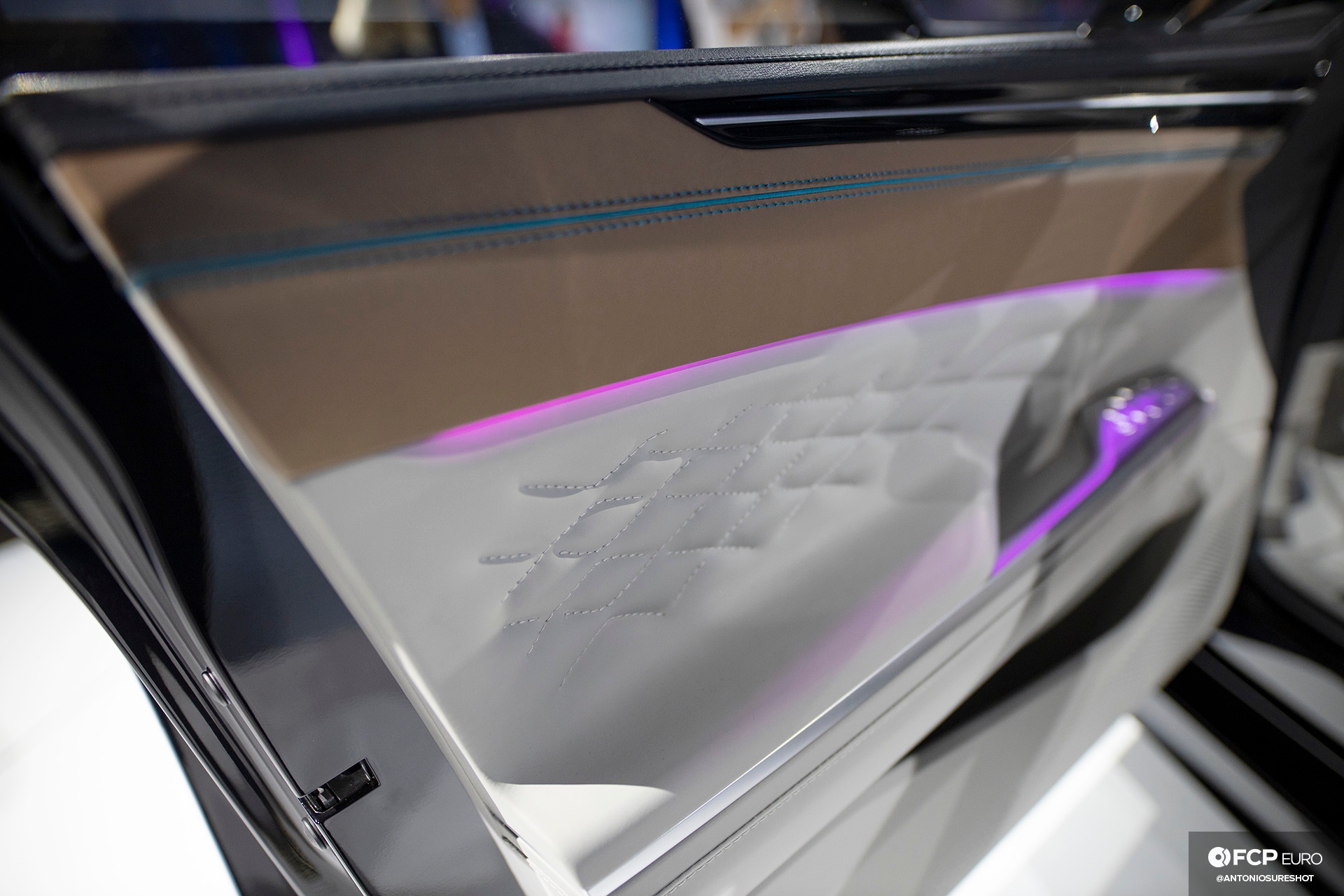
The materials used on the doors and seats are also not made of leather. These are a new material that Volkswagen is calling “AppleSkin.” It’s a plant-based leatherette that uses leftover matter from apple juice production.
Even the plastic parts are made of a version of AppleSkin with another version being developed to mimic metal. “All of the materials used in the Space are made of recycled materials,” said Mr. Bischoff, “so we conquer one environmental step after the other of responsible electric mobility.”
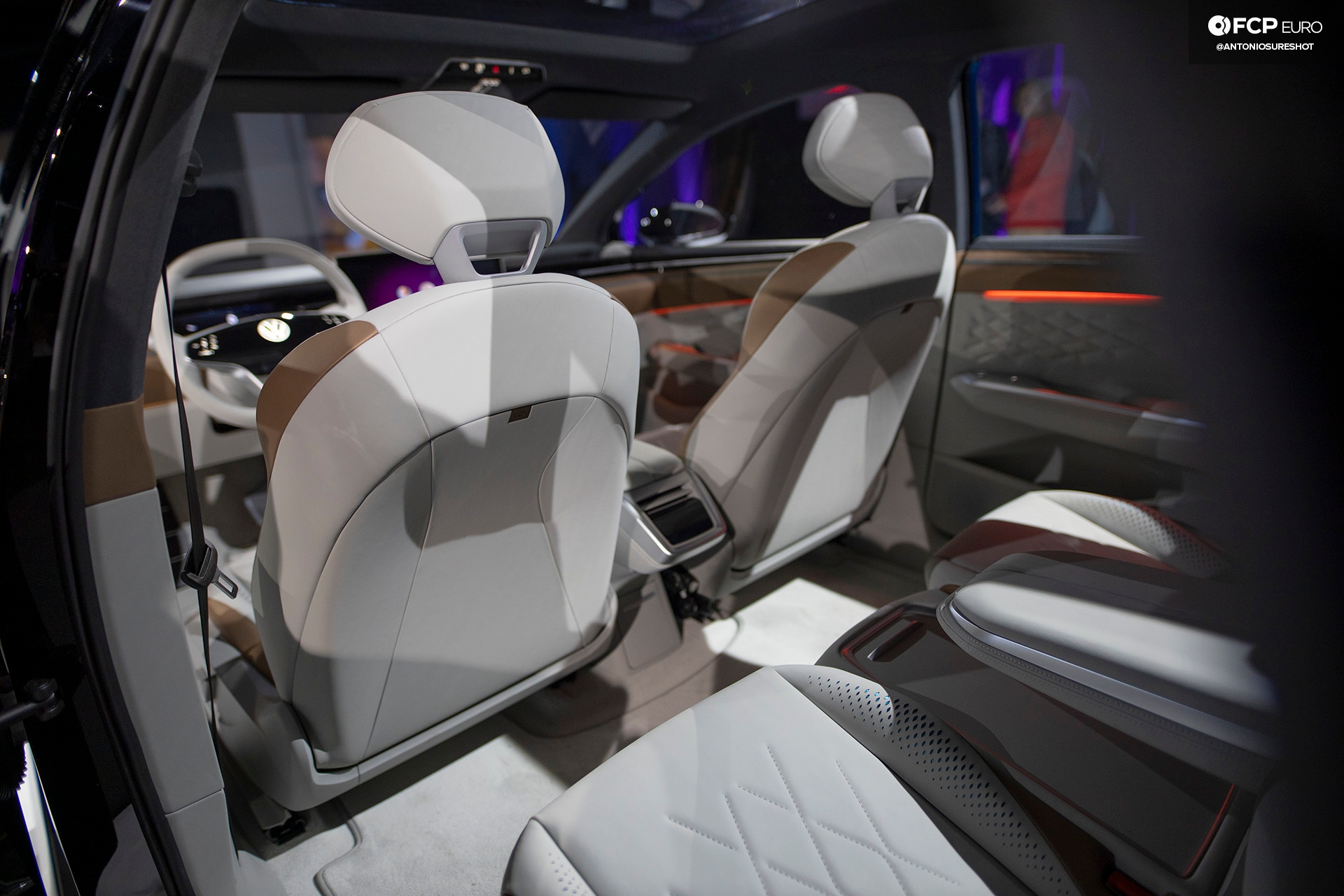
From what we could feel, the material is rather nice. It has that nice, leather texture you expect but without the sacrifice of the cow.
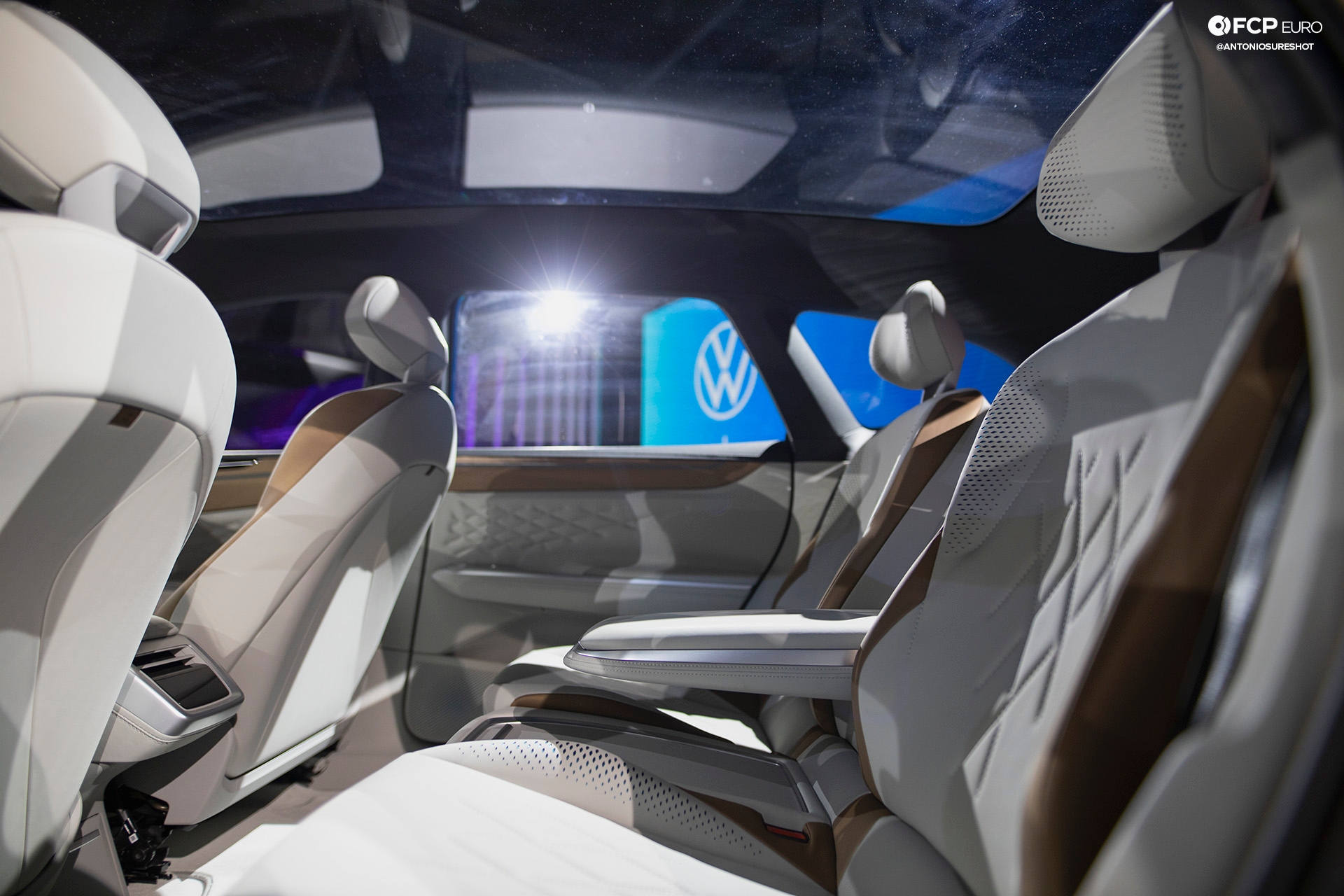
The rear seats of the ID. Space Vizzion are individual buckets with an armrest splitting them just like the front occupants. Even so, each person has plenty of room despite its exterior size. While it’s about the same size as a Passat wagon outside, inside it’s more like an SUV. You have room to stretch your legs out as you don’t need to compromise the floorboard design with drivetrain or engine constraints. That’s the beauty of a flat floor.
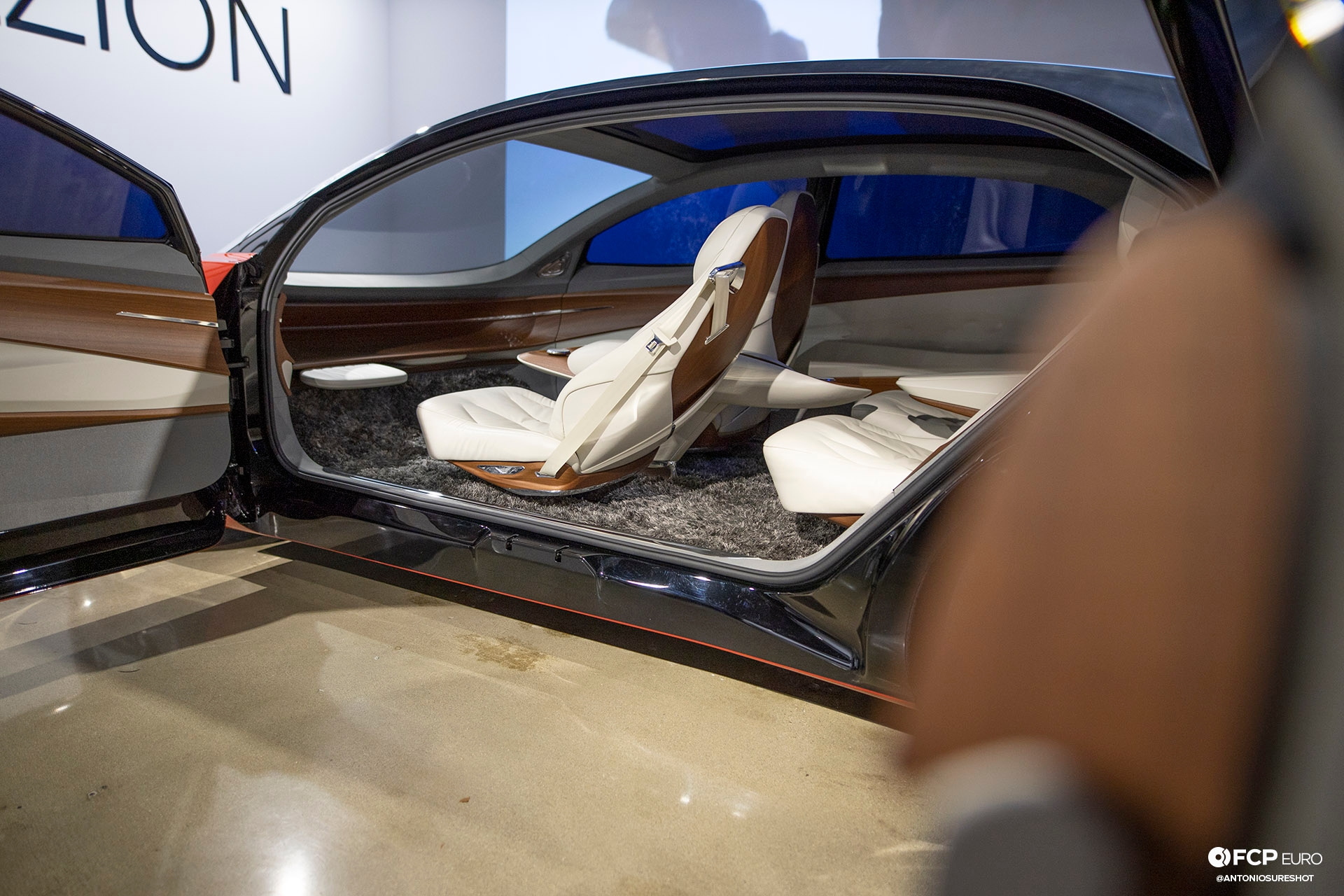
This was a design element we’ve seen since the original ID. concepts, but none as radical as the ID. Space Vizzion.
Another version of the concept on display at The Petersen Museum shows off a B-pillarless opening with suicide rear doors, showing off the vast amounts of room inside it. For the ID. Space Vizzion, we're hoping this goes from wild concept to something we’re going to potentially see in a real production car.
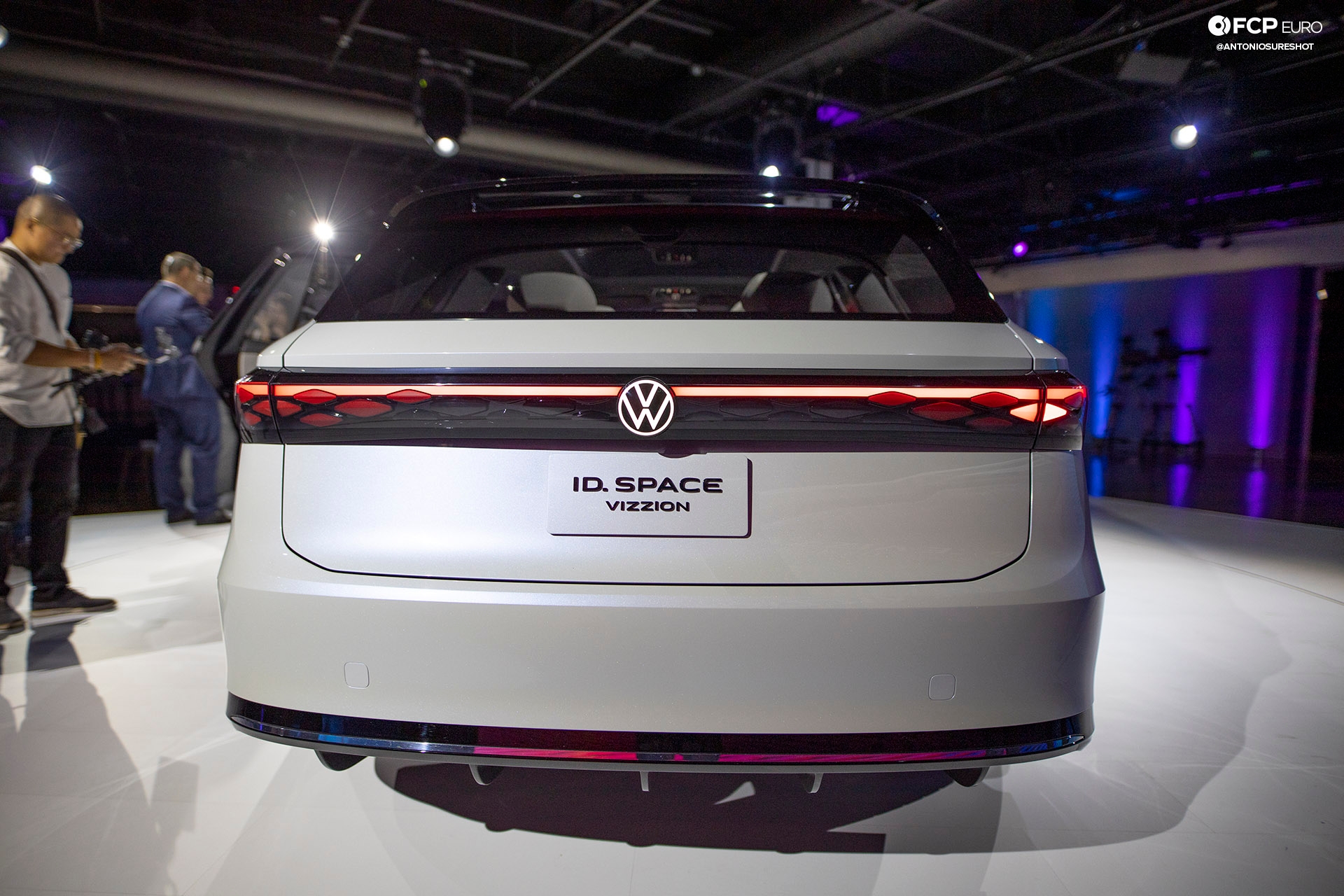
The other great thing about a flat floor vehicle is its cargo room.
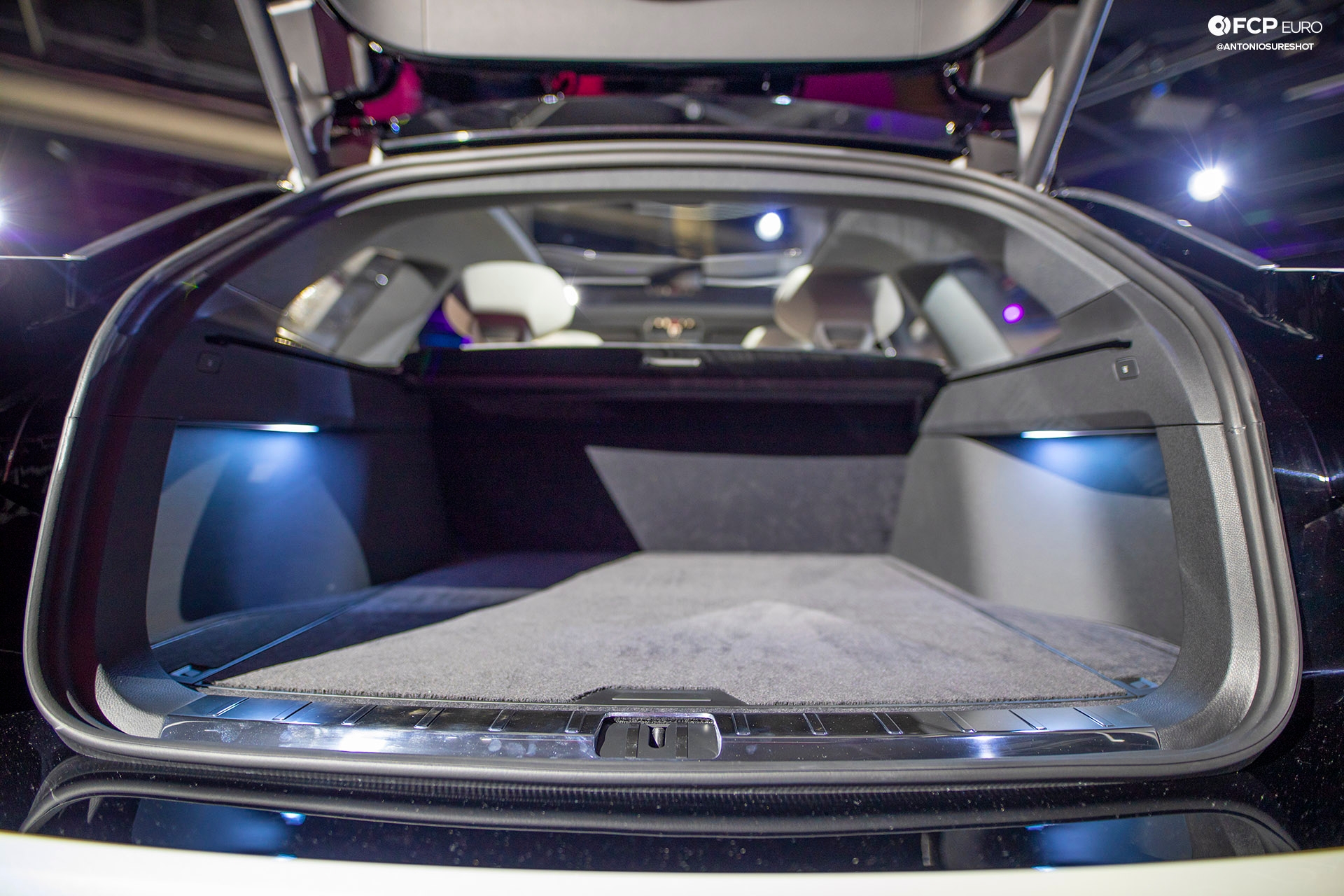
There are no differentials to get in the way, no humps to install so you can route exhaust properly, nor a tunnel for a driveshaft. You get so much workable space inside a vehicle that’s isn’t constrained by drive or engine parts in its floor design. As Mr. Bischoff explained, “What people need is space on the inside with a relatively compact outside. To have very clever products is essential, and that’s what Volkswagen is about.”
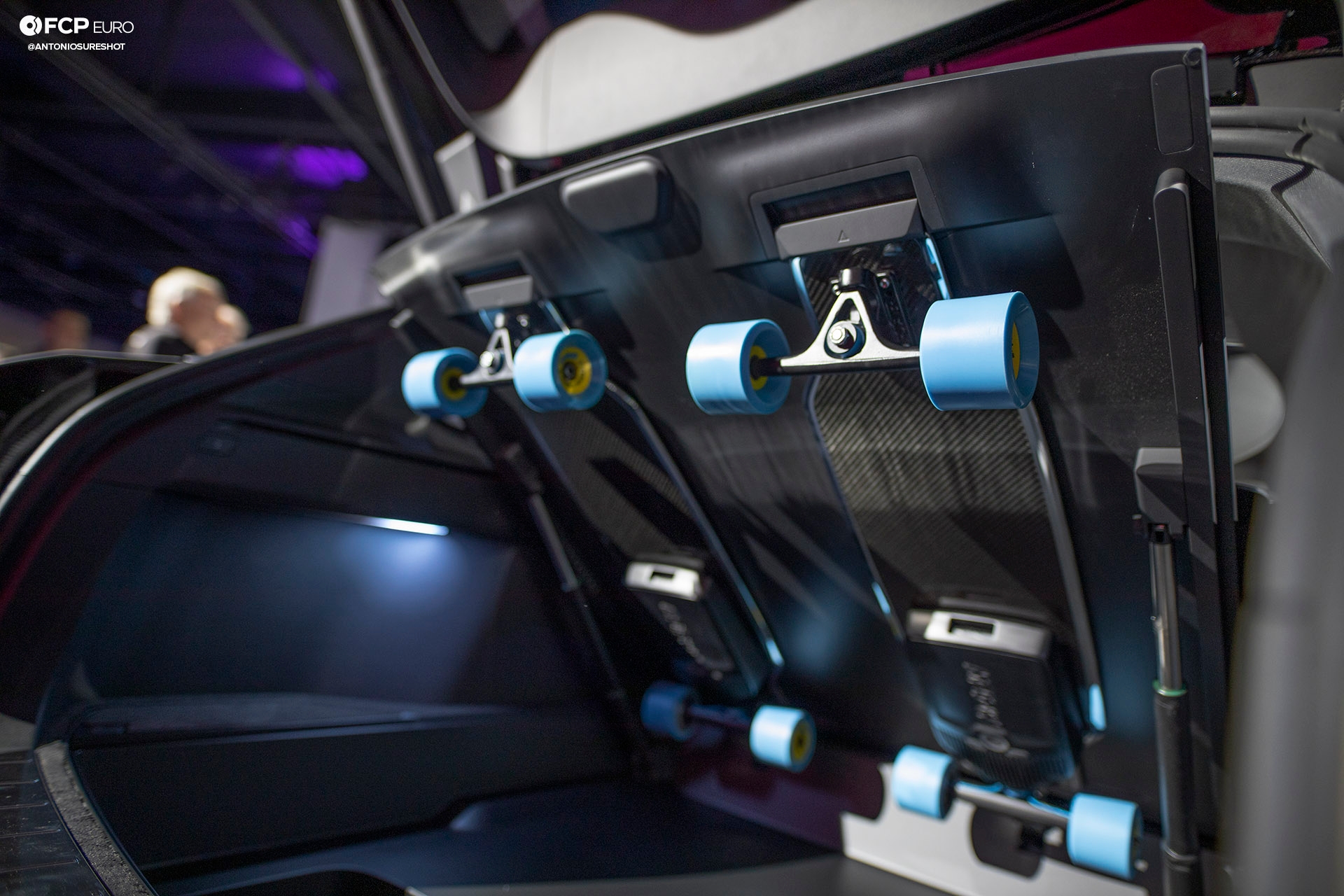
The clever innovation here–and excellent proof of the advantage of a flat floor–is the storage area under the cargo floor for a pair of electric-propelled longboards. Not only do you have room for two of them, with batteries installed, but…
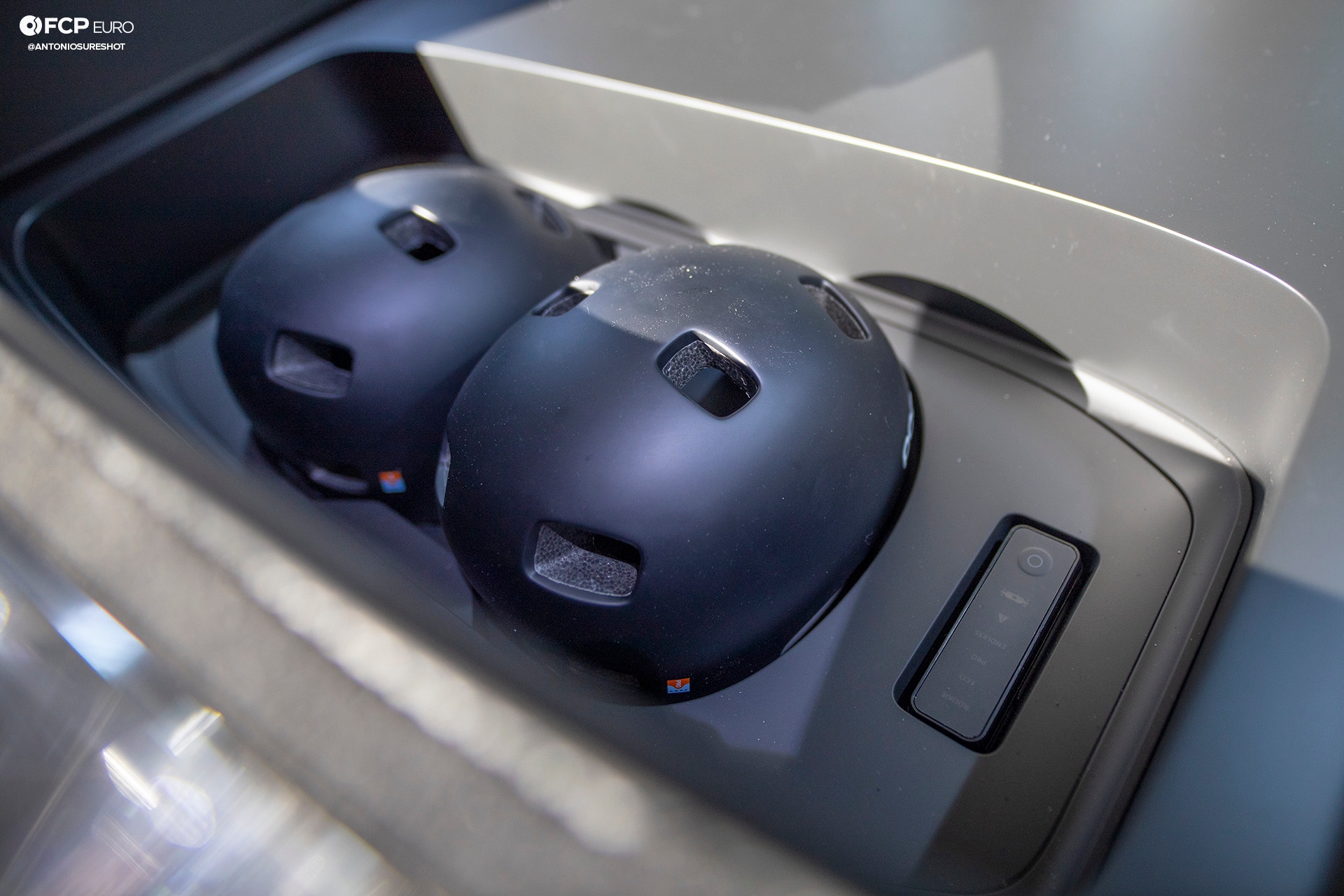
You also have room for two helmets underneath them. No, this probably won’t make it to production but it is a great demonstration of what you can do. Most likely, this will become another cubby space under the cargo floor but it does get you thinking about what you can do with this design.
The longboards installed under the cargo floor also hint at how this chassis can be made into so many different things.
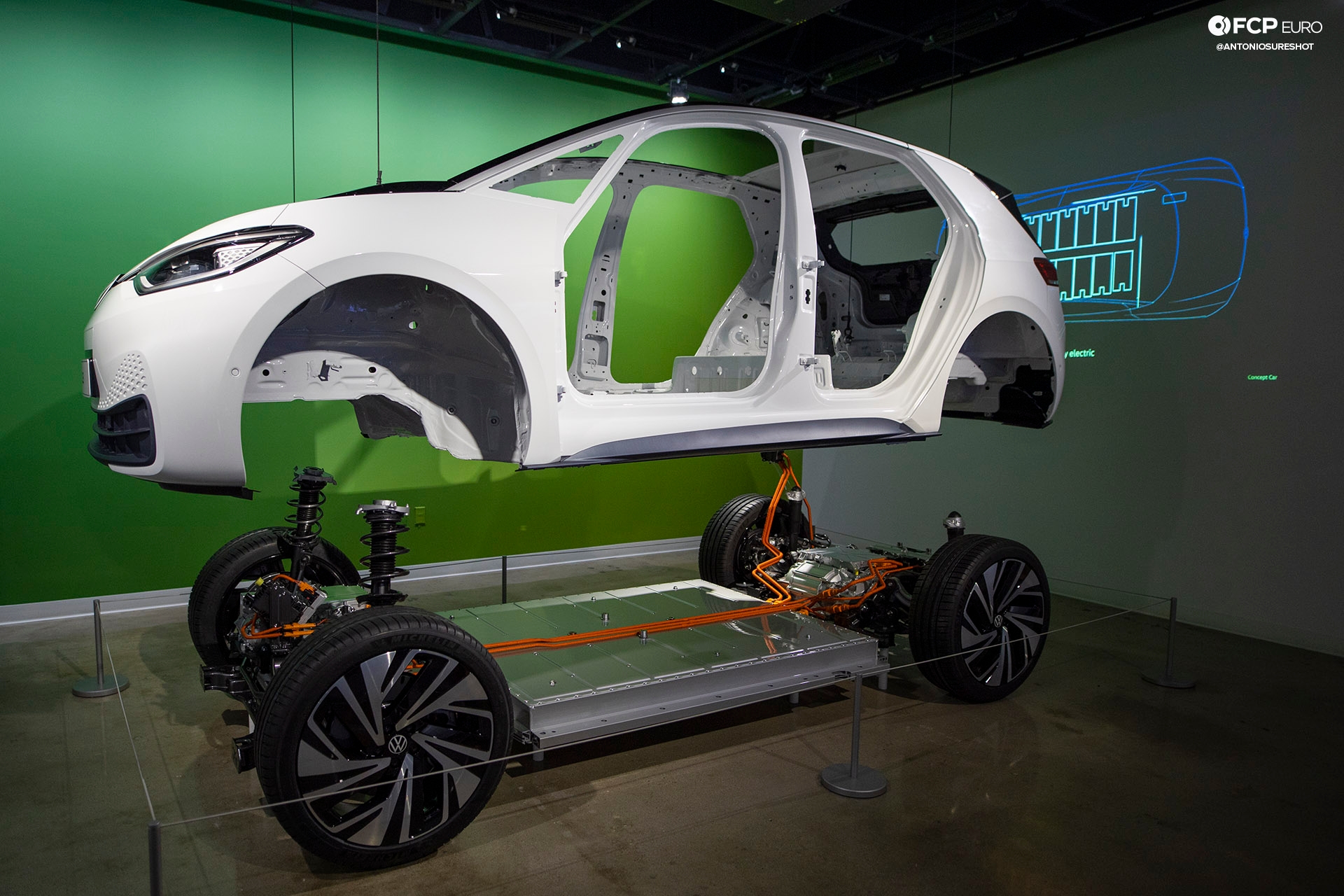
Conveniently, the main component chassis of ID. Space Vizzion, the MEB or Modularer E-Antriebs-Baukasten was a part of the "Building an Electric Future" exhibit.
The MEB is sort of like a vehicle-sized skateboard and, roughly translated from German, MEB is Modular Electric-Drive Kit. It's beauty is that it is an expandable part to fit many different vehicle types.
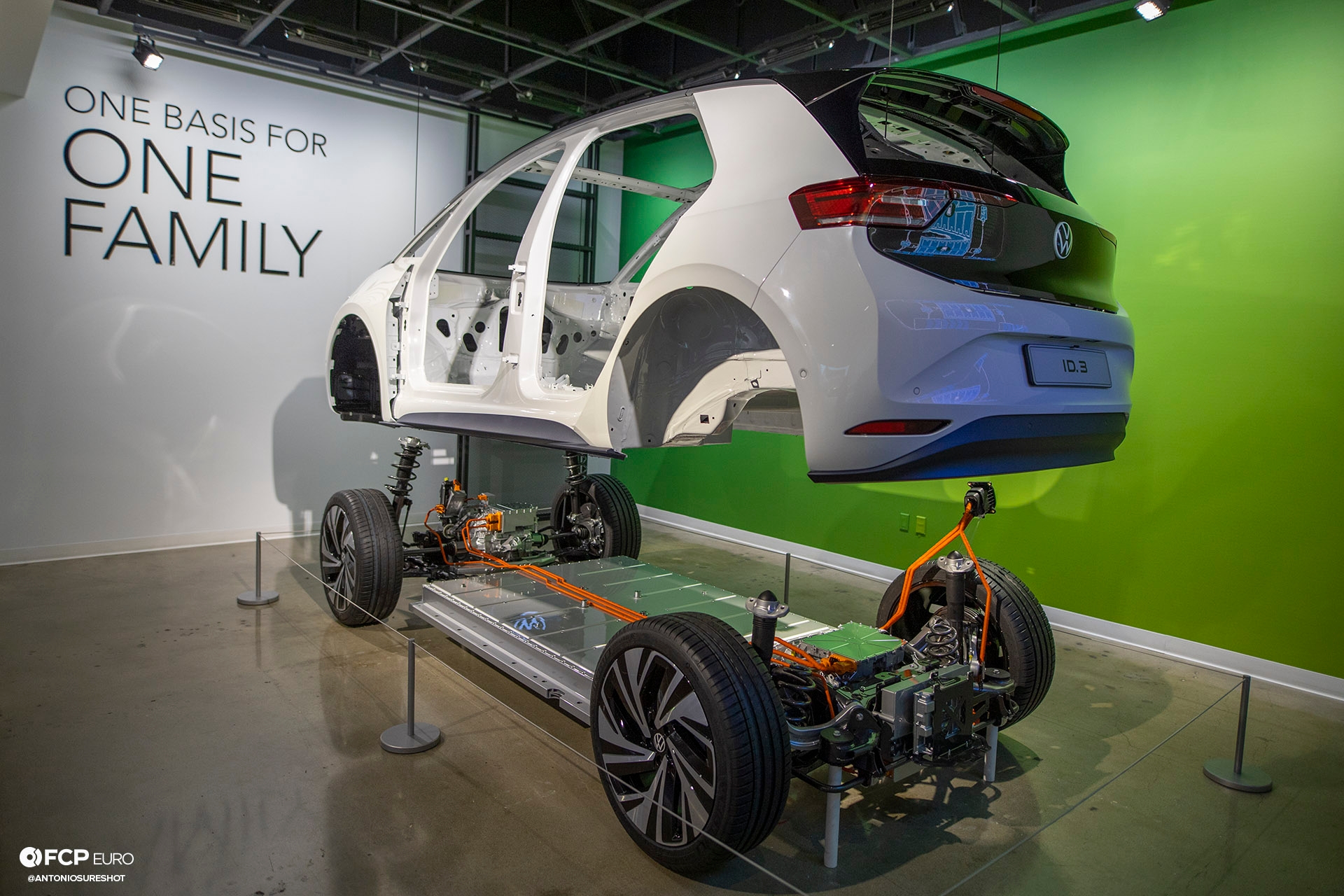
Much like VW’s MQB, it can be stretched and lifted as the platform requires it. Every ID. series we’ve seen all use the MEB platform. From the short, Golf-like ID.3 to the Buggy, Buzz, Vizzion, and now the ID. Space Vizzion. Beyond Volkswagen, the Audi Q4 e-tron, Skoda Vision iV, and SEAT el-Born are all also on the MEB.
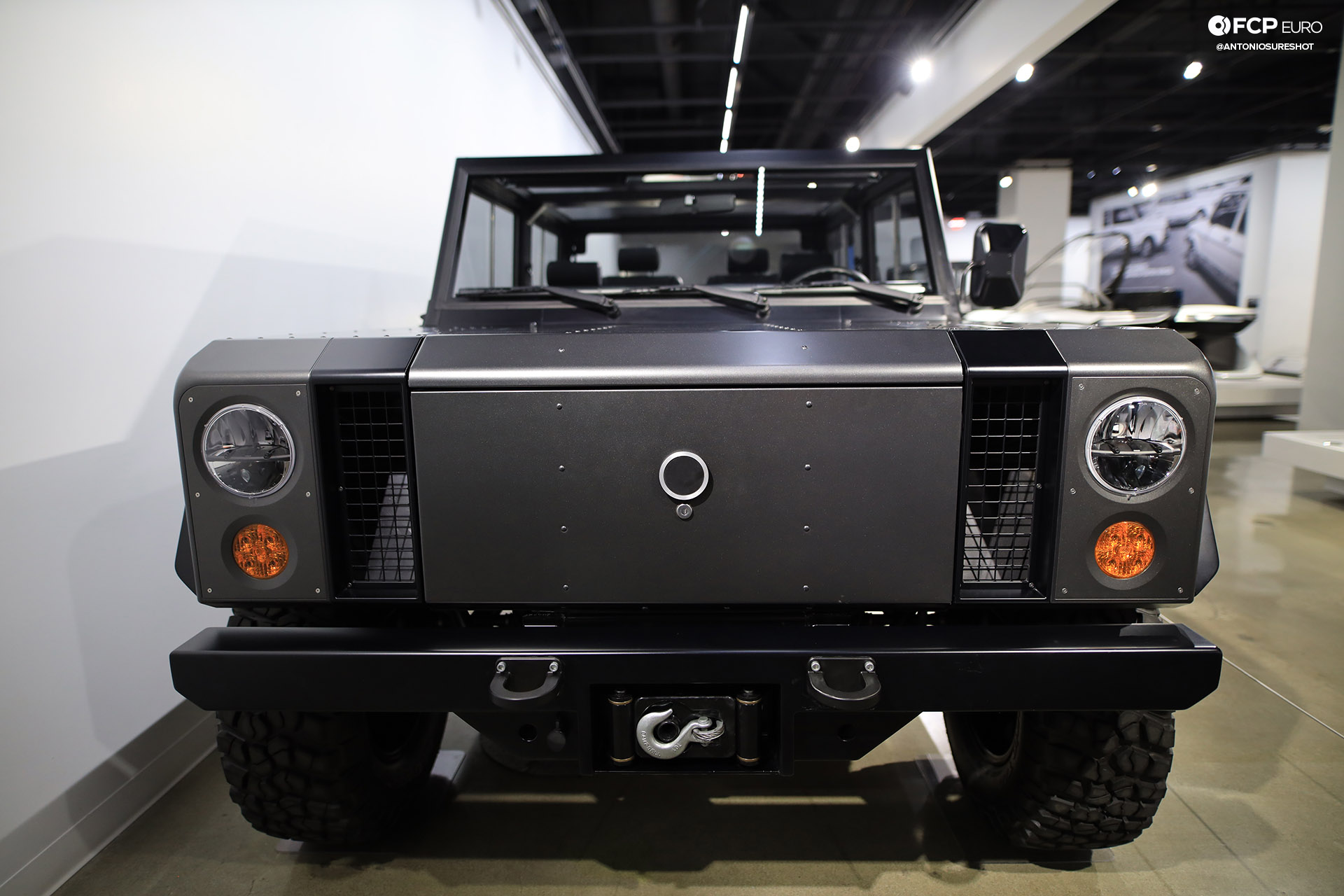
The flat, skateboard-like design is actually decades old and is used on many different types of electric vehicles right now. The scalability and flat-floor features of the skateboard chassis is even taken to an extreme on the Bollinger B1 SUV and B2 truck, which is also on display as part of the Electric Future exhibition.
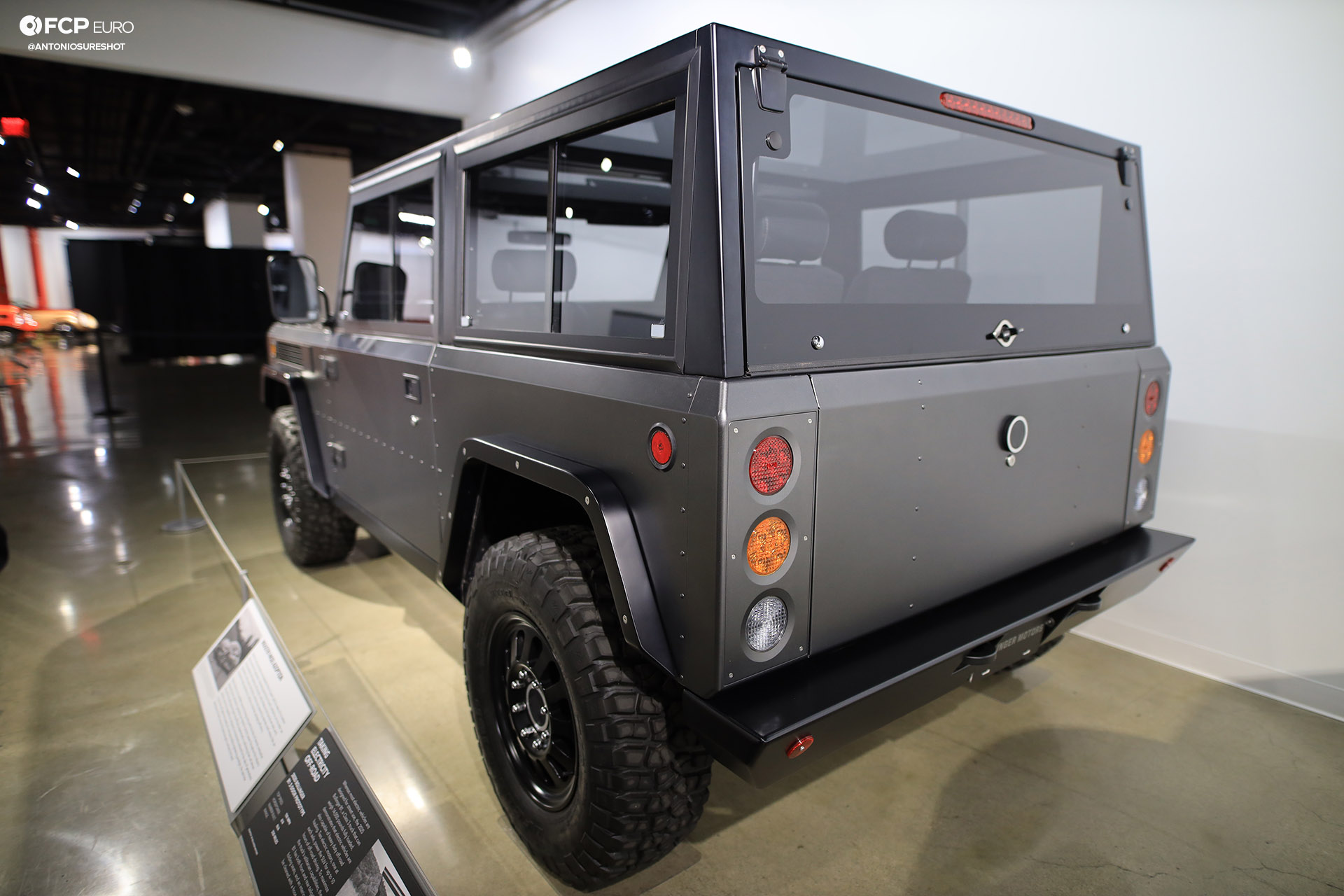
Thanks to its flat floor and lack of a center tunnel, it can take a full length of 2x4 without the need for it to be exposed to the elements. It can pass through the front firewall and still allow the rear hatch to close. Because of its modular design, it can become a three-door SUV, four-door SUV, or a four-door truck with a full-length bed.

Faraday Future also used the design to create a passenger car concept and this radical Racer concept.
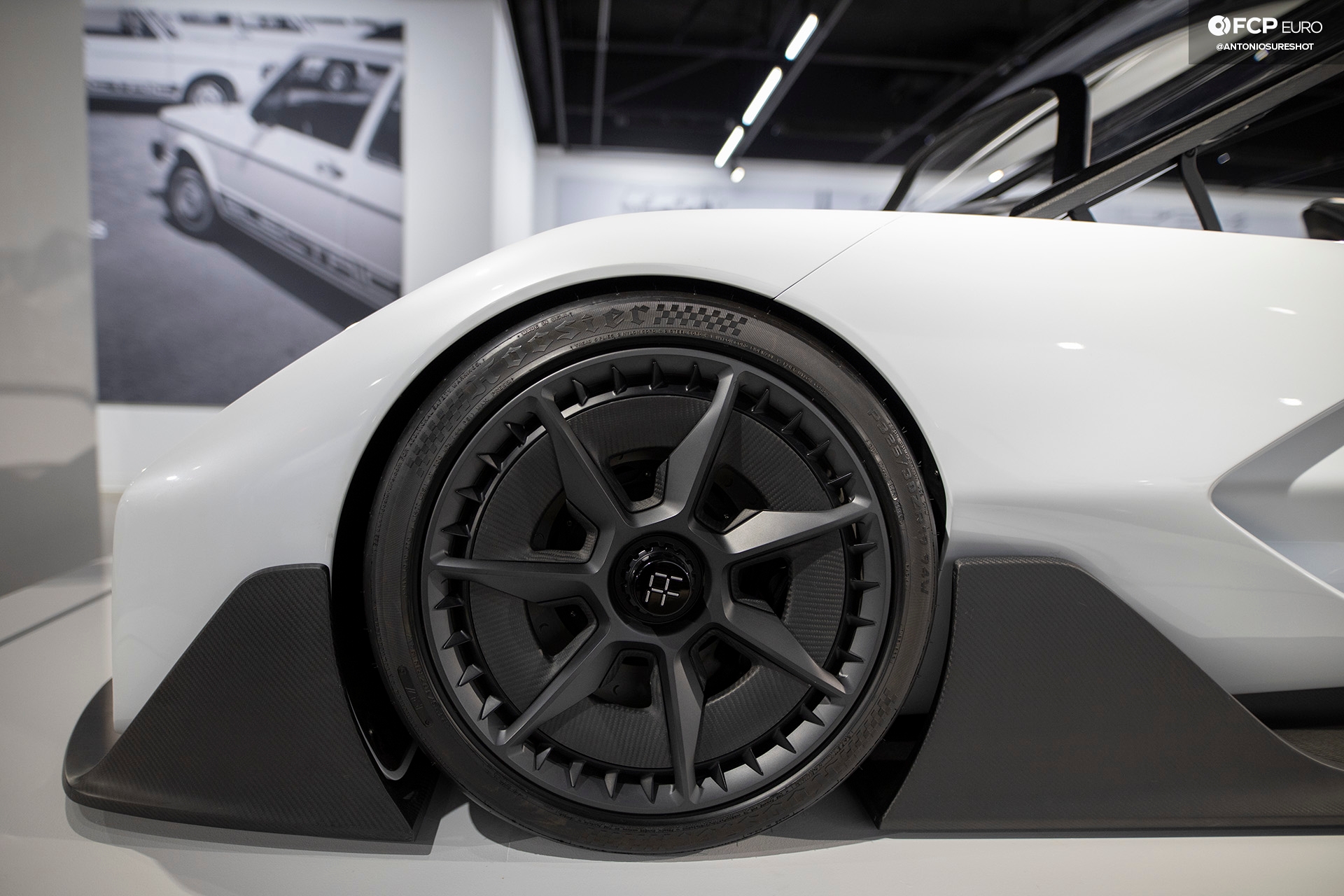
Both versions use the same skateboard platform but have radically different bodies. The sedan can seat multiple people but the Racer is a single-occupant car. The driver sits in the center of the bubble cockpit with a drive-by-wire steering wheel that moves away on its own pedestal.

It also has incredible looking aerodynamics that would have made the famous Formula One aerodynamicist Ben Bowlby blush. All because it could be designed with drive and suspension components placed out of the way. Perfect for maximizing the design of parts like aero tunnels and diffusers.

For Volkswagen, though, the skateboard idea isn’t so far fetched from their own past. When you think of the Type 1, the original Beetle, its body could be removed and a new body sat in its place. That wasn’t VW's intent when it was built, but that’s how VW coach builders like Bruce Meyers of Meyers Manx could produce iconic vehicles like the Manx dune buggy above.

Now, thanks to the MEB, it’s quite possible we’ll have another chassis we can make into our own Manx, just like the Type 1. It’s going to take some work, obviously, but so did the Manx.
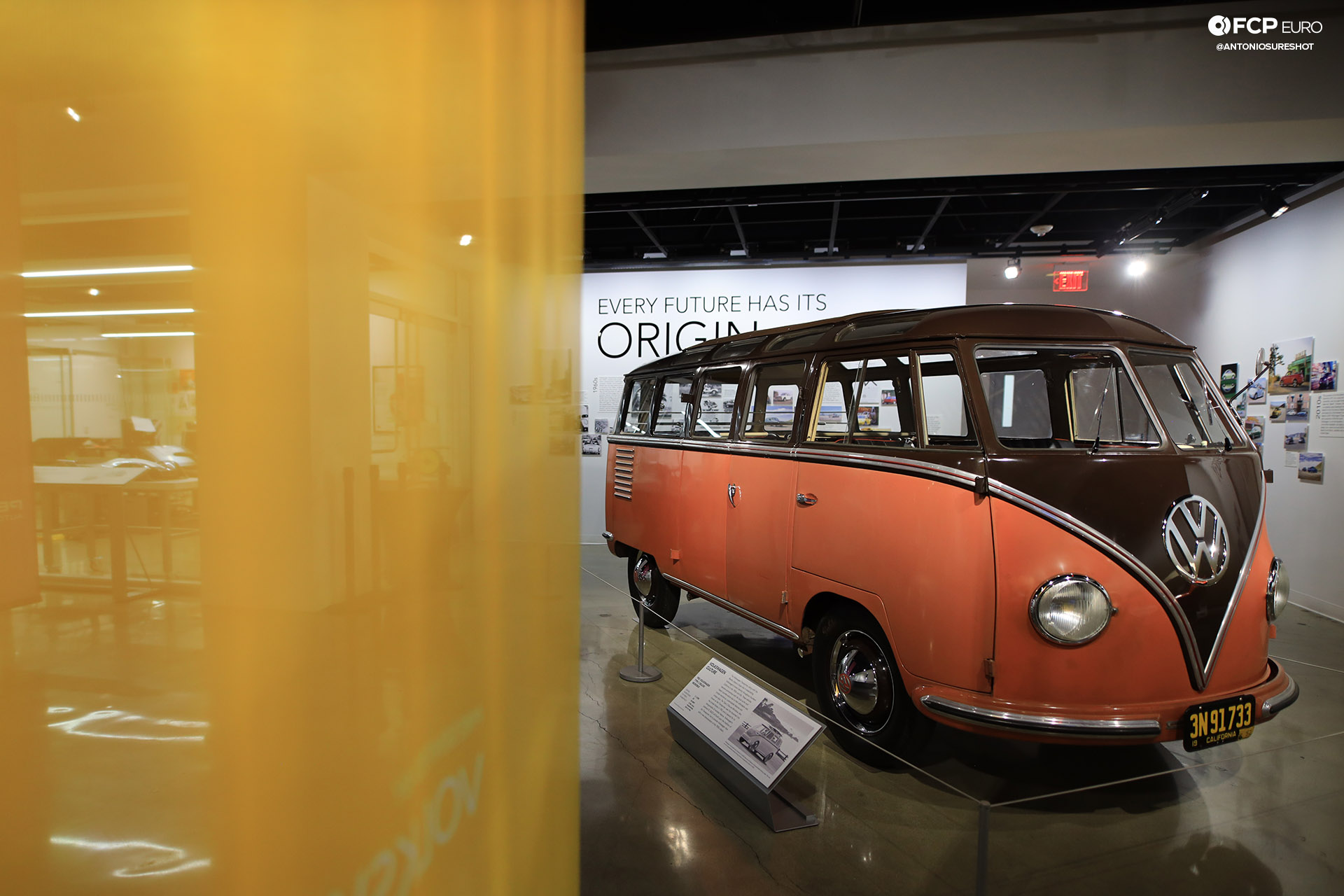
We know that there is some loathing of the electric car. People complain that the lack of engine noise is enough to keep them away. However, when talking with those who have made the switch, they have enjoyed it no matter what was getting power to the wheels. Further, it is allowing us to keep classic vehicles on the road and relevant far into the future with conversions supported by the OEMs, including VW.
For the production side, electric vehicles are giving us a sustainable future. A future that not only includes the vehicles we use to get from point A to point B but motorsports as well, as Volkswagen has demonstrated. From the ID.3 to the ID.R, there will be an EV VW for everyone to enjoy. That’s not something you can celebrate too often nowadays.
Story by Justin Banner
Photos by Antonio Alvendia
If you liked these EV Volkswagens, you can find additional Volkswagen content at volkswagen.fcpeuro.com. If there's anything specific you would like to see, or if you have any questions/comments, leave them in the comments section below.


